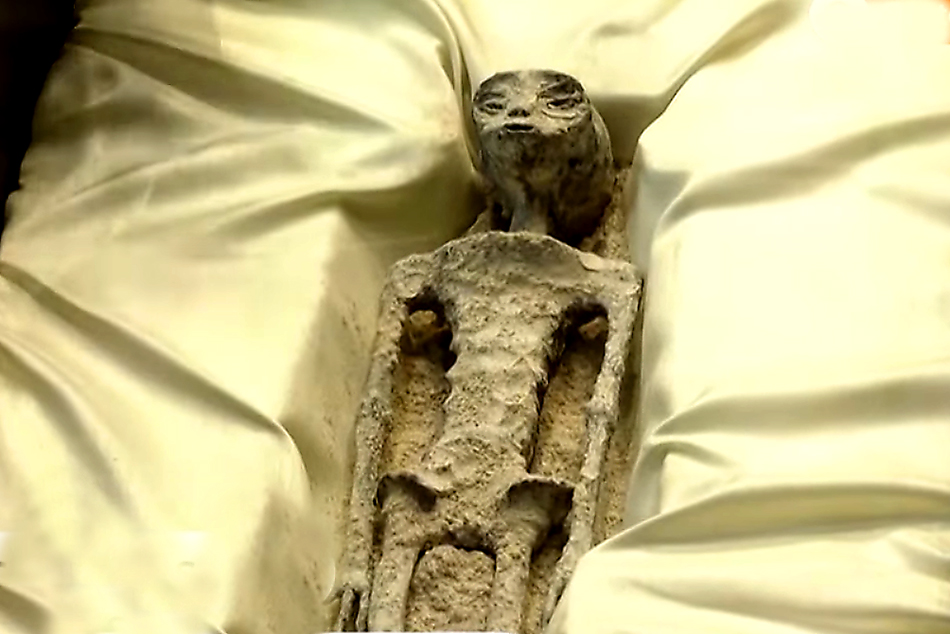Alien Corpses Displayed At Mexico's Congress

Ufologist Jaime Maussan showcased two mummies in the Mexican Congress, which he claims are the remains of extraterrestrials.
This was reported by The New York Times.
According to the official report, the two mummified specimens were found in Cusco, Peru, before being brought to the Mexican capital. It is reported that the skeletal remains had three fingers on their hands and feet and were displayed in transparent glass coffins for the public.
Under oath before the government of Mexico and U.S. officials, Maussan revealed that the unusual specimens had recently been studied at the National Autonomous University of Mexico (UNAM) using carbon dating, which determined that the mummies were at least 1,000 years old.
"These specimens are not part of our Earthly evolution... They are not beings found after a UFO crash. They were found in mines with diatomaceous algae and later fossilized," the ufologist stated under oath.
Jaime Maussan resides in Mexico and is well known for making such claims in the realm of pseudoscience on television and YouTube, as well as selling his own line of dietary supplements. His presentation has drawn attention to the growing fascination in Mexico with the possibility of extraterrestrial life, which some say is the result of U.S. government efforts to lift the veil of secrecy on government programs that studied unexplained phenomena.
Maussan was invited by legislator Sergio Gutiérrez Luna, who said he was interested in hearing different perspectives on the subject, which has sparked broad interest. However, Mr. Maussan's presentation stunned many in Mexico's scientific circles. After images of the mummies began to circulate, the Institute of Physics at the National Autonomous University of Mexico issued a statement clarifying that its researchers had never examined the specimens themselves, only conducting carbon dating tests on skin samples provided by the client.
The university laboratory that conducted the testing "disassociates itself from any use, interpretation, or further distortion of the results it provides," the institute said. "We by no means draw conclusions about the origin of these samples." Similarly, Antigona Segura, a leading astrobiologist in Mexico, questioned Mr. Maussan's claims. "These conclusions are simply not supported by evidence," said Dr. Segura, who collaborates with the Nexus for Exoplanet System Science, a NASA initiative to search for life in distant realms. It remains unclear how Mr. Maussan obtained the mummified samples to Mexico from Peru, whether they are genuinely from Peru, whether his specimens are reproductions, or how they differ from other mummified remains previously believed to be extraterrestrial and still located in Peru.
Peruvian news reports indicate that Mr. Maussan learned of several mummies in 2017 from a Peruvian tomb raider. An analysis of the examined samples in Peru showed that they were made using a combination of human and animal bones, plant fibers, and synthetic adhesives. Another analysis in 2021 determined that the head of one of the specimens had a fractured skull. Whilt debunking claims that the mummies were extraterrestrial, researchers expressed amazement at how these specimens were made centuries ago, as they appeared to be very high-quality creations.